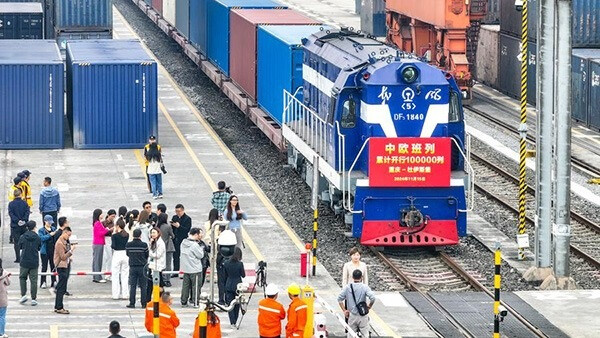
Duisburg, Germany, December 4, 2024 – A historic milestone was reached today as the 100,000th China-Europe freight train arrived at Duisburg's Port. This landmark achievement signifies the remarkable growth and impact of this rail service, which has become a cornerstone of the Belt and Road Initiative (BRI).
Launched 13 years ago, the China-Europe freight train has transported over 11 million TEUs of goods, valued at over $420 billion. The service has revolutionized trade between Europe and Asia, providing a reliable, efficient, and environmentally friendly alternative to traditional shipping routes.
Transforming Duisburg into a Global Logistics Hub
Duisburg, once a traditional industrial city, has emerged as a major logistics hub, thanks in large part to the China-Europe freight train. The port now handles over 4 million TEUs annually, making it a vital gateway for trade between Europe and Asia.
A Boon for Industries
The China-Europe freight train has benefited a wide range of industries. For retailers like Deichmann, the railway has stabilized supply chains, enabling faster deliveries and better responsiveness to consumer demands. The pharmaceutical industry, with its stringent temperature control requirements, has also found the railway to be a reliable solution.
The automotive sector has also seen significant benefits. The innovative financial model, which allows the use of rail bills of lading as collateral for secure international letters of credit, has eased financial burdens for smaller enterprises.
A Symbol of Global Cooperation
Despite rising geopolitical tensions, the China-Europe freight train has continued to thrive, demonstrating the resilience of economic cooperation. The service proved particularly valuable during the COVID-19 pandemic, ensuring the flow of essential goods between the two continents.
As the world looks towards a future of sustainable and efficient trade, the China-Europe freight train stands as a beacon of hope, offering a model for global cooperation and economic prosperity.
[Copyright (c) Global Economic Times. All Rights Reserved.]






























